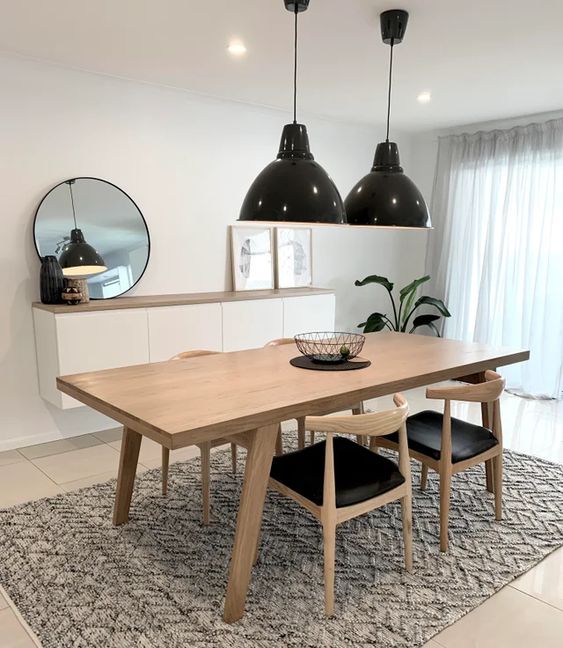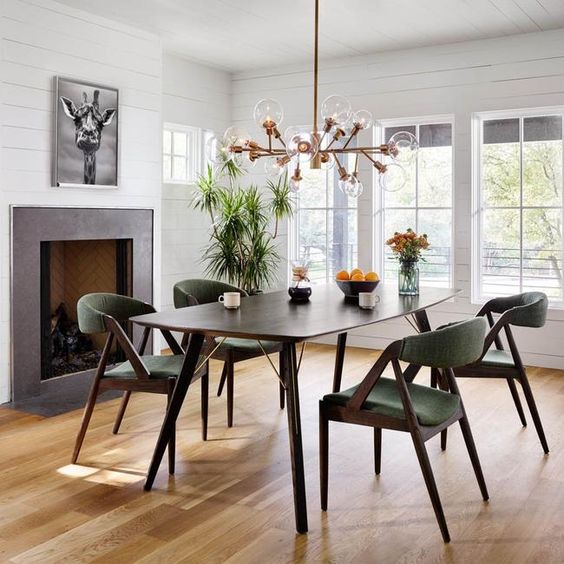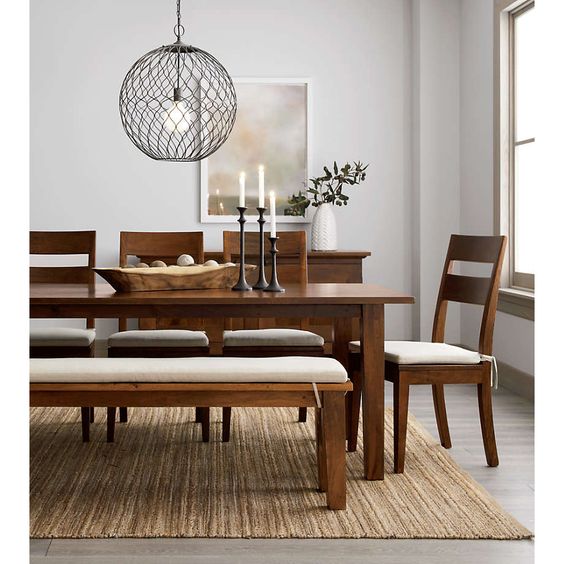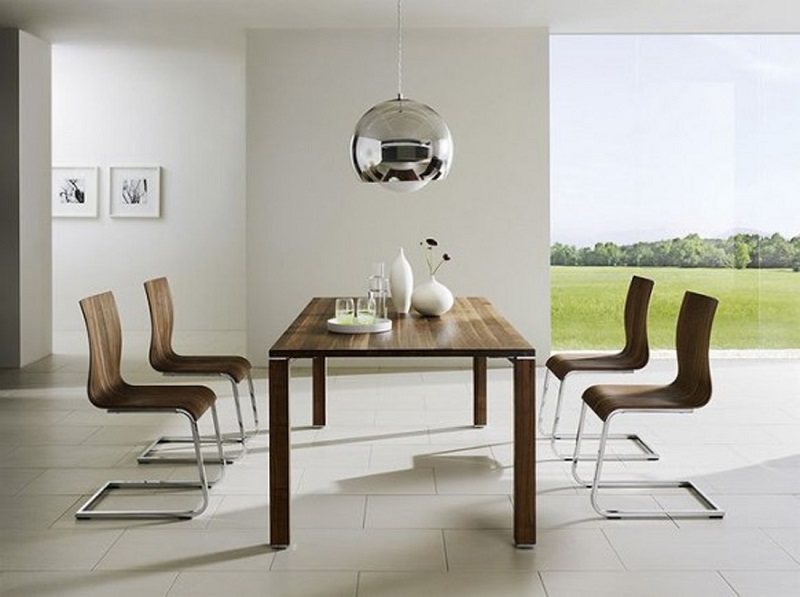Okikiko.com – Think of the minimalist dining room design. Pushed away by more elaborate, cluttered looks, the all-business minimalist style takes lessstuff, less room, and certainly less decorative flourishes. While the minimalist interior style can range from clean-line to completely bare, there are no limits to what kind of minimalist dining room you can create. The trick is knowing how to pull it off.
Create a Minimalist Dining Room
There are many ways to create a minimalist dining room without sacrificing anything. Start with just a few decorative accessories. A vase of fresh flowers is enough to reflect on your dining table, but you could also add some old-fashioned wicker or wrought iron candle holders to the mix. In addition, you should select one or two different light fixtures to compliment your table. For instance, if you’re going for a more classic look, you might want to select one or two very plain lamps; you can use these to bring some color and character to the space as well as showcase your table setting.

To really create the minimalist dining room, make sure that your furniture is very basic, or at least, that it has very few decorative trimmings. Seating arrangements should be as bare as possible, since this is the place where you will spend most of your time. One essential in minimizing the clutter is to ensure that you keep your dining rooms clutter-free all the time.
Minimalist Dining Room Design Lighting
When choosing a light fixture, be aware that minimalist dining room designs require less lighting than traditional ones. One way to achieve this minimalist look is to keep your fixtures to a minimum. If you have a big table, opt for a chandelier above the dining table. If you have a smaller table, you may just need a recessed ceiling lighting, which will help illuminate the area better and save you on light bulbs. The most important thing is that you choose the fixtures that go with your decor. Here are a few essential light fixtures to help you get started.

The chandelier is an absolute must, especially if you’re going for a minimalist dining room design. This fixture is usually placed on top of a tall lamp or wall to draw attention to its shape and beauty. Nowadays, you’ll also find recessed chandeliers available in modern designs, which allow you to conceal the wires. If you’re aiming for a minimalist dining room design, you can even choose fixtures without a lamp or a cabinet. Just make sure they’re either in the same color (or at least close to it) and/or have the same minimalist look.
Use of Minimal Elements for the Dining Room
Another essential for your minimalist dining room design is the use of minimal elements. This may mean using only one piece of furniture (the dining table, for example), as well as using textures and colors that have as few components as possible. If you want a very minimalist dining room, you should keep the number of components down to a minimum. Minimalism also requires you to accent colors and surfaces with minimal objects, such as textiles, rugs, and candles. You can add as many or as few of these items as you like.
To make your minimalist dining rooms as appealing as possible, there are a few things you should never do: don’t put too many chairs in the dining room, don’t fill the dining room with too many tables, and don’t go overboard with the pillows. Too many chairs in a room can be distracting, as are too many tables. It’s best to stick to the essentials, such as a couple of chairs and perhaps a small table, so you avoid overwhelming the space and making your dining rooms look crowded.

Another thing that you should remember is that minimalist design essentials mean focusing on the elements surrounding the furniture, rather than the furniture itself. A minimalist dining room doesn’t require you to go all out on bold, bright colors. The walls will typically be a neutral gray or black, with the accent walls and accent furniture being either neutral brown or off-white. If you want to add splashes of color, you can but it should be done in moderation, as too much color can be distractive. Similarly, go with a neutral palette for your wall color choices, as well as the colors of your accent pillows and throws. Keep the rest of your design ideas neutral so that everything works together well.


